In this video, Rich Hickey introduced Clojure for Lisp programmers.
At time 01:10:42, he talked about nil/false/end-of-sequence/'() among Clojure/Common Lisp/Scheme/Java. He said: "Scheme has true and false, but they are broken."

I don't understand why he said that and why does he consider it's "broken"?